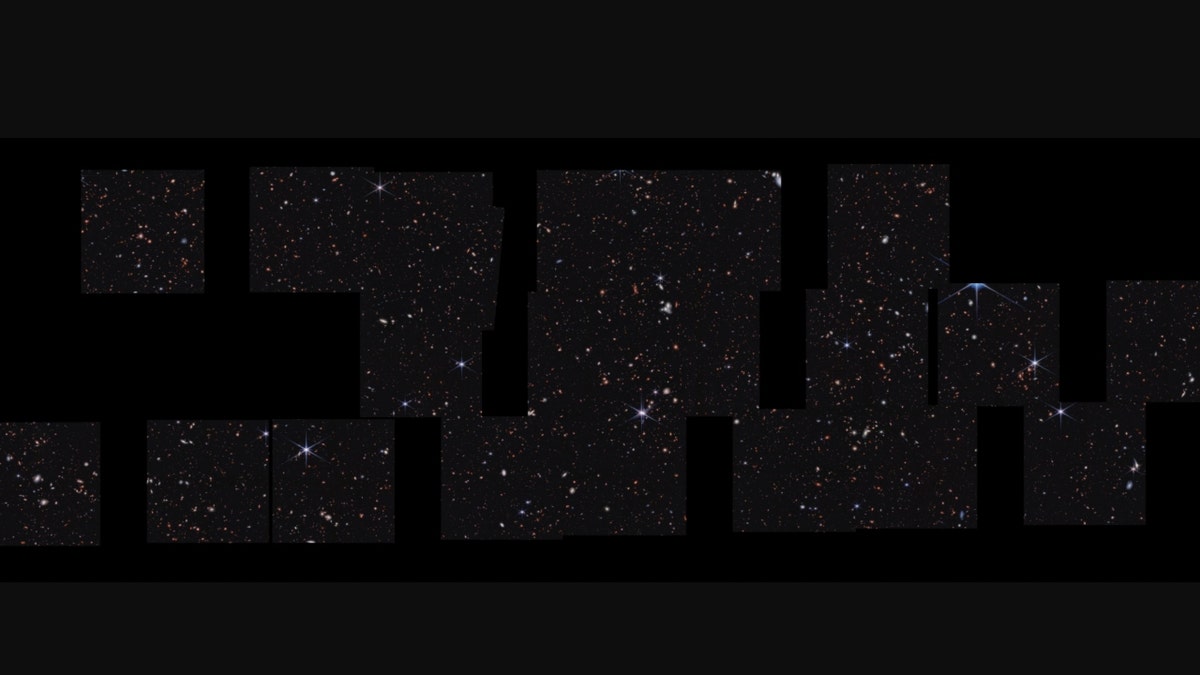Webb Space Telescope allows us to 'look into the past': Theoretical physicist
Theoretical physicist Dr. Michio Kaku explains the significance of new images provided by NASA's Webb Space Telescope on 'Sunday Night in America.'
Researchers have used the James Webb Space Telescope to discover the most distant active supermassive black hole ever seen.
The black hole is located in the galaxy CEERS 1019.
NASA said two smaller black holes were easily "shaken out" as well. The first, within galaxy CEERS 2782, and the second in galaxy CEERS 746.
"Researchers have long known that there must be lower mass black holes in the early universe. Webb is the first observatory that can capture them so clearly," team member Dale Kocevski, of Colby College, explained in a release. "Now we think that lower mass black holes might be all over the place, waiting to be discovered."
JAMES WEBB SPACE TELESCOPE CAPTURES DAZZLING GALAXY COLLISION

In a survey of 100,000 galaxies named CEERS, Webb found the most distant active supermassive black hole to date, two more small early black holes and 11 early galaxies. (Credits: NASA, ESA, CSA, Steve Finkelstein (UT Austin), Micaela Bagley (UT Austin), Rebecca Larson (UT Austin))
The agency said the NASA telescope had also identified 11 galaxies that existed when the universe was 470 to 675 million years old – noteworthy because researchers theorized Webb would detect fewer galaxies than being found at these distances.
The program, Webb's Cosmic Evolution Early Release Science (CEERS) Survey that is led by Steven Finkelstein of the University of Texas at Austin, combines its near- and mid-infrared images and data – spectra – to make these discoveries.

This graphic shows detections of the most distant active supermassive black holes currently known in the universe. They were identified by a range of telescopes, both in space and on the ground. Three were recently identified by in the James Webb Space Telescope’s Cosmic Evolution Early Release Science (CEERS) Survey. (Credits: NASA, ESA, CSA, Leah Hustak (STScI))
HUBBLE TELESCOPE SPIES SPARKLING IRREGULAR GALAXY 11 MILLION LIGHT-YEARS AWAY
The galaxy's black hole is also notable for how little its black hole weighs, coming in at about 9 million solar masses. That mass is far less than other black holes that also existed in the early universe.
Furthermore, while it has been long known that smaller black holes must have existed earlier in the universe, there were not definitive detections until Webb began making observations. NASA noted that this black hole existed so much earlier that it is still difficult to explain how it formed so soon after the universe began.

Stare deeply at this vast landscape. It was stitched together from multiple images captured by the James Webb Space Telescope in near-infrared light – and it is practically pulsing with activity. To the right of center is a clump of bright white spiral galaxies that seem to be twisting into one another. Threaded throughout the scene are light pink spirals that look like pinwheels twirling in the wind. The bright foreground stars, set off in blue, announce themselves with Webb’s prominent eight-pointed diffraction spikes. Don’t miss an unconventional sight: In the bottom row, find the square second from far right. At its right edge, a misshapen blue galaxy is outfitted in blue-and-pink sparkling star clusters. (Credits: NASA, ESA, CSA, Steve Finkelstein (UT Austin), Micaela Bagley (UT Austin), Rebecca Larson (UT Austin))
The CEERS team found that the galaxy is ingesting as much gas as it can while forming new stars.
CLICK HERE TO GET THE FOX NEWS APP
In the future, NASA says it's possible Webb's data may be used to understand how early black holes formed.
"Until now, research about objects in the early universe was largely theoretical," Finkelstein said. "With Webb, not only can we see black holes and galaxies at extreme distances, we can now start to accurately measure them. That’s the tremendous power of this telescope."




















